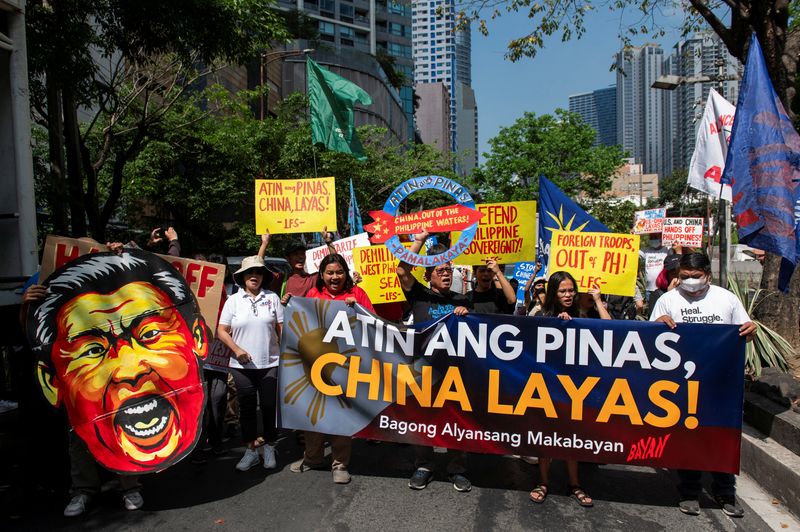Protesters in Manila recently rallied against Chinese President Xi Jinping and China’s actions in the South China Sea. The protesters trampled on an effigy of Xi Jinping and called for China to leave the area, specifically targeting China’s alleged aggression towards the Philippines in the disputed waters. This demonstration was fueled by a recent incident where China used water cannons to disrupt a Philippine supply mission to soldiers stationed on a grounded warship at the Second Thomas Shoal.
The ongoing tensions between the Philippines and China stem from conflicting territorial claims in the South China Sea. China asserts almost the entire South China Sea as its territory, despite a 2016 ruling by the Permanent Court of Arbitration declaring Beijing’s claim as baseless. The Philippines, along with other neighboring countries, have been at odds with China over maritime boundaries and the presence of Chinese coastguard vessels in disputed waters. The protesters in Manila are demanding that China vacate the West Philippine Sea, adhere to the arbitral tribunal ruling, and cease its harassment of Filipino fisherfolk and supply missions.
The demonstrators in Manila directed their message towards the Chinese government, urging them to respect international law and the rights of Filipino fishermen operating in the South China Sea. China’s expansive claims and aggressive actions in the region have prompted backlash from neighboring countries and raised concerns about increased militarization and tensions in the area. The protest in Manila serves as a visible display of opposition to China’s behavior in the disputed waters and a call for diplomatic resolutions to the territorial disputes in the South China Sea.
The protest in Manila comes amid growing geopolitical competition in the Asia-Pacific region, with China asserting its influence and power in maritime disputes and territorial claims. The South China Sea has been a hotbed of contention, with multiple countries vying for control over strategic waterways and natural resources. The Philippines, as a claimant state, has been vocal in its opposition to China’s encroachment in the area, leading to confrontations and disputes over sovereignty and maritime rights.
While tensions between the Philippines and China have escalated in recent years, efforts to find peaceful resolutions and promote cooperation between the two nations have also been made. The Philippines has sought support from international allies, such as the United States and other Western powers, to counter China’s assertiveness in the region. Diplomatic channels, including the arbitral tribunal ruling, have been utilized to address the disputes, but China’s refusal to acknowledge the court’s decision has hindered progress in resolving the conflicts.
Overall, the protest in Manila reflects the ongoing challenges and complexities surrounding the South China Sea disputes, as well as the broader issue of territorial sovereignty and maritime security in the Asia-Pacific region. The standoff between the Philippines and China highlights the need for diplomatic dialogue, adherence to international law, and respect for the rights of all parties involved in order to prevent further escalation of tensions and promote stability in the region.


